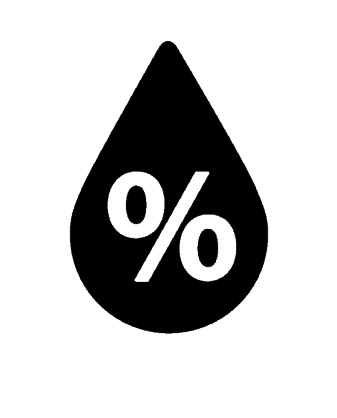Storing and Handling HDPE Bottles Properly
Bottle storage conditions such as time, temperature, and humidity can have an effect on HDPE containers. The exposure and age of a sample can also affect the shrinkage, impact properties, and stress crack resistance of the container.
Storage Time
 The storage time of unfilled bottles should be minimal. A strict first-in first-out inventory should be maintained. Many end users will re-approve bottles after two or three years of storage.
The storage time of unfilled bottles should be minimal. A strict first-in first-out inventory should be maintained. Many end users will re-approve bottles after two or three years of storage.
Storage Temperature
 Elevated storage temperatures allow HDPE containers to further shrink and harsh conditions can actually cause severe distortion. The degree of distortion and shrinkage depends on the bottle design and storage conditions. Higher storage temperatures also accelerate the aging process of the container. Moderate storage temperature should be provided to insure consistent bottle dimensions and properties. It is routinely reported that HDPE bottles can withstand temperatures of 110°F for brief periods.
Elevated storage temperatures allow HDPE containers to further shrink and harsh conditions can actually cause severe distortion. The degree of distortion and shrinkage depends on the bottle design and storage conditions. Higher storage temperatures also accelerate the aging process of the container. Moderate storage temperature should be provided to insure consistent bottle dimensions and properties. It is routinely reported that HDPE bottles can withstand temperatures of 110°F for brief periods.
Storage Conditions
 Although humidity itself will not degrade the HDPE container, a humid environment can have a direct impact on the secondary packaging, such as cardboard cartons. Use of stretch wrapping and/or controlling warehouse conditions will help alleviate secondary packaging problems.
Although humidity itself will not degrade the HDPE container, a humid environment can have a direct impact on the secondary packaging, such as cardboard cartons. Use of stretch wrapping and/or controlling warehouse conditions will help alleviate secondary packaging problems.
Surface Contamination
 Bottles should be kept as clean as possible; it is best to leave in original sealed cartons. Storage area should be kept clean, dry, dust, odor, insect, and rodent free.
Bottles should be kept as clean as possible; it is best to leave in original sealed cartons. Storage area should be kept clean, dry, dust, odor, insect, and rodent free.
Need answers to your storage questions? Call 610-367-5000 to speak with a knowledgeable team member.
The information and recommendations on this page are believed to be correct. However, no guarantee or warranty of any kind, express or implied, is made as to such information contained herein, including any warranty of fitness or merchantability, and Drug Plastics assumes no responsibilities for the results of use of the information described herein.
